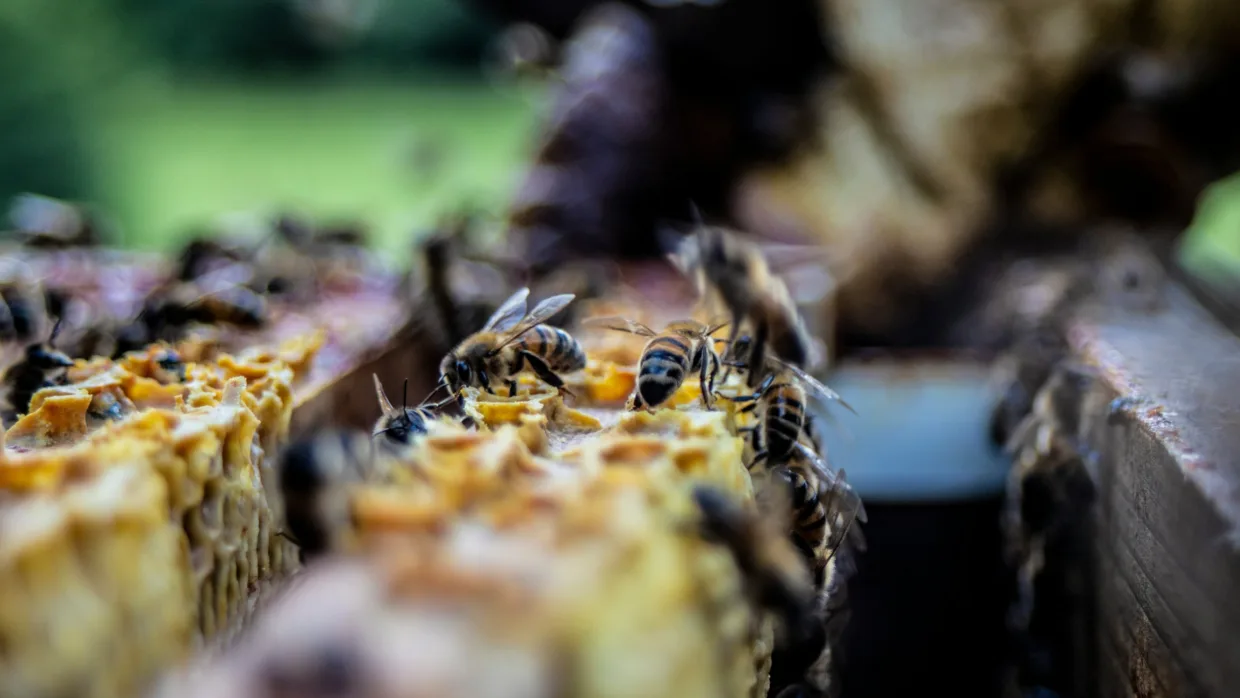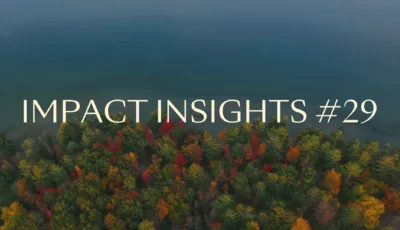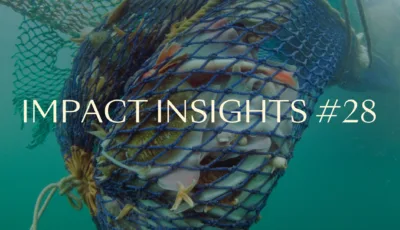Viewpoint: When powerful ideas meet AI.

How AI can supercharge progress toward the SDGs
Artificial Intelligence has the potential to enable solutions critical to address some of the most urgent and wicked problems of our time. Today, none of the UN’s Sustainable Development Goals are on track for 2030. Half show moderate progress, and a third are stalling or backsliding. AI can shift that trajectory—if used wisely.
This is not a distant promise: use cases of AI for good are growing in numbers, and fast. In healthcare, AI supports early disease detection. In education, it powers adaptive learning tools. In conservation, it harnesses satellite data to predict forest fires and prevent poaching. The many reports on real-world AI applications only show us a glimpse of what is possible- experts declare the breadth of AI’s applicability is so extensive that it can virtually increase the pace of progress on all the SDGs.
But despite holding great promise, AI poses new risks to our societies. Millions of people face job displacement. Deepfakes and misinformation blur the line between fact and fiction. And behind the scenes, AI models consume vast amounts of electricity and water.
As AI's reach expands, we must shape its development and implement clear guardrails. That means stronger standards, better infrastructure and talent access, and regulation enabling responsible innovation. The EU AI Act, which came into force in August 2024, marks a critical step in that direction.
AI is a powerful tool, and the responsibility is enormous—but so is the opportunity.
Our impact champions harness AI for real-life impact

Bee Futures: AI-powered beehives for biodiversity recovery
The lack of biodiversity data is a recognized challenge, limiting our ability to gain awareness of biodiversity issues and take remedial action. Beefutures has invested in the idea that AI can benefit nature.
Their approach begins with something familiar: a standard beehive. With the addition of the Onibi Base, a compact device installed beneath the hive, it becomes a real-time biodiversity monitoring station. Mounted on the Onibi Base, Onibi Watch observes bee behaviour and captures a wealth of visual data: pollen colours, load sizes, body movements. Beefutures’ AI model continuously processes this information. It feeds into the Onibi Insight dashboard, assessing the surrounding environment, including floral diversity and availability, potential toxins, invasive species, and more.
These insights enable regenerative farmers, beekeepers, and urban planners to better understand how to reverse biodiversity loss, whether by planting native species, refining land use, or designing pollinator-friendly policies and corporate programs.
In 2024, Beefutures turned yet another species than bees into biosensors to tell us about the environment: birds. Beehives often attract birds that feed on fallen bees, making them ideal sites for passive bird monitoring. With a small audio recorder placed at the hive entrance, Beefutures' Bird Recognition feature now identifies bird species daily, all year round. Changes in bird presence over time can indicate shifts in habitat quality or ecosystem health, adding another layer to the environmental picture.
The AI-driven pollen analysis was also enhanced due to recent hardware improvements in imaging quality. A single hive has expected patterns in pollen collection.
Ava Ocean: AI-powered sustainable seabed harvesting
Wild seafood is traditionally harvested with dredgers, which cause lasting damage to the seabed. Ava Ocean has developed an innovative harvesting unit that uses pumping technology to create water flows, making it possible to lift and collect scallops without damaging the seabed.3 Now, Ava Ocean is taking further steps to bring positive change to the industry.
Traditional seabed dredgers raze entire seabed areas”, with limited data on collected seafood species or their size before they are sorted in the vessel. As opposed to this destructive practice, Ava Ocean is developing an AI algorithm that enables precise harvesting, in collaboration with SINTEF. Coupled with cameras that film the seabed while the vessel is operating, the algorithm is being built to evaluate the pictures taken, recognize how many scallops there are (if any), and determine whether an area is suitable for harvesting. This enables Ava Ocean to prioritize areas with high scallop density, saving time, money, and ship emissions.
However, it is equally important to use the collected data to monitor the status of the seabed and the species. The algorithm will assess the habitat and species stock in an area before and after harvesting. By delivering this data to marine institutes with expertise in scallop growth, the industry could better pinpoint when a vessel should return to fishing in that area.
Looking ahead, a commercialized algorithm will make more data available for research institutes, authorities, and companies to change how the industry is managed. The outcome: Optimized fishing routes enable the sourcing of nutritious seafood where stocks are sufficient while ensuring enough specimens are left to reproduce.
Farmable: AI-powered farm management
We need agricultural practices that increase productivity and strengthen our food systems' capacity to adapt to climate change. AI can accelerate that transition, but this can’t happen without good data.
Farmable’s platform already collects historical field data such as crop types, spray jobs, harvesting jobs, past disease records, and field notes, among other inputs.
But it’s not stopping there—Farmable is working on integrating AI into its platform, which will simplify farmers' day-to-day work in identifying crop varieties, spotting pests and diseases, and estimating yields. The in-app AI can cross-reference historical field data, soil samples, and satellite imagery of fields over time to give highly personalized and precise insights that farmers can act on.
For instance, imagine a farmer uploading a picture of a tree they suspect is sick. The model will combine the picture information with previously logged data (the field's geology, the varieties growing, the products sprayed in the previous years, and field notes) and generally available knowledge on the Internet. The farmer then gets told what could make the tree sick, how this could impact yield, if the field has a history with that disease, and if treatment previously applied had been effective.
Beyond disease detection, AI use can better estimate future yields. The model can analyze a picture of an apple tree—the apples’ color, size, and number —and estimate the overall yield of the field based on logged data such as the number of trees in the field and the yield in previous years.
And though the AI recommendations are already “shockingly accurate” in the words of Farmable founder Lars Petter Blikom, they will keep improving - the more quality data is considered, the sharper the insights get, and fewer errors can happen.
DoMore Diagnostics: AI for more accurate cancer prognostics
More than 1 million people are diagnosed with colon cancer each year. While surgically removing the tumor can cure some patients, an aggressive treatment is often needed afterwards. However, it is challenging to determine who needs that treatment, as ways to predict what course the cancer will take are limited.
Today, specialists attempt to assess how aggressive a tumor is by identifying specific biomarkers. However, these are not spread evenly throughout the tumor, and only a small part of it is tested. As a result, we risk missing the cells responsible for the progression of the disease.
Post tumor removal, not knowing whether the cancer could further develop, doctors prescribe chemotherapy as a precaution. However, less than 20% benefit from it. Some undergo treatment even though they were at a low risk of the disease progressing, and suffer from side effects.
Using large data sets, DoMore Diagnostics has developed Histotype Px® Colorectal, an AI-powered digital biomarker that enables more precise prognostics.5 After being removed, the tumor is separated into different digitized slides. DoMore’s deep-learning algorithm analyzes these slides and differentiates patients into three risk categories (low, intermediate, and high) depending on the likelihood of the disease progressing. Patients categorized as high risk undergo chemotherapy, while low-risk patients can avoid unnecessary exposure to chemotherapy’s toxic chemicals.
DoMore offers a reliable solution that provides results in minutes and integrates into existing hospital workflows. Beyond avoiding significant costs by preventing unnecessary treatments of low-risk patients (EUR 4 billion annually), the tool improves cancer patient care.
This piece was originally published in our 2024 Meaningfulness Report.
Read the full report


